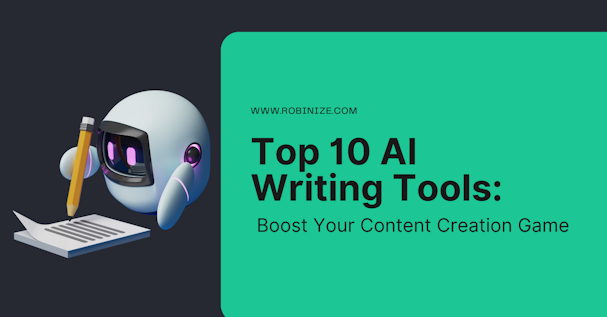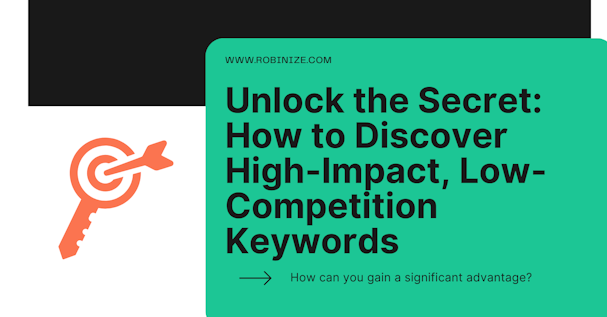What is User Intent and how it helps Content writing?

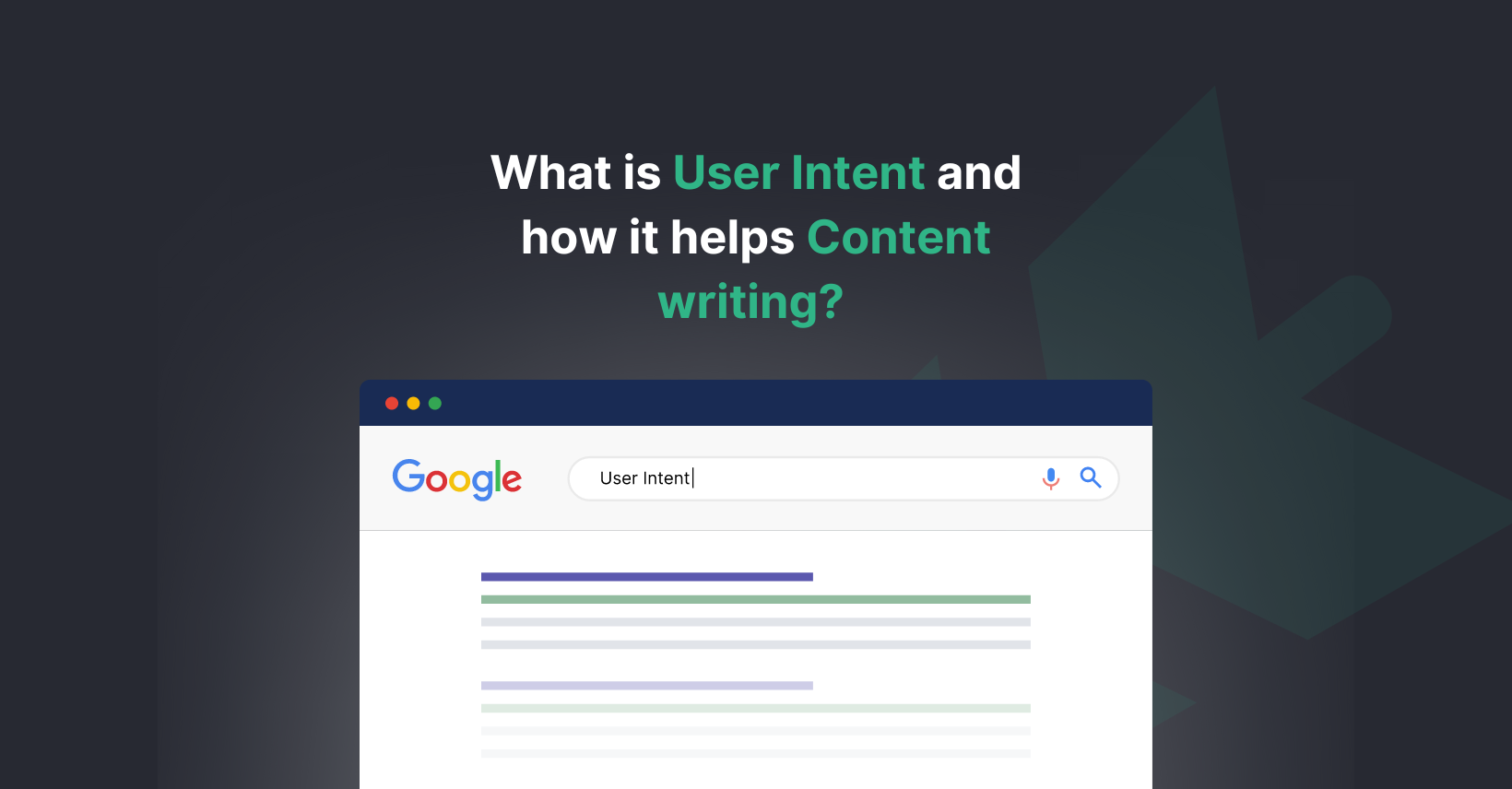
Every piece of content you write and publish is meant to solve a particular problem for the reader. In fact, meeting a user intent is a condition to be successful.
In this article, you’ll learn what user intent is, and the best practices to optimize your content, improve user experience, and increase conversion rates.
Table of contents:
What is user intent
Types of user intent
Content optimization with intent
Conclusion
What is user intent?
User Intent, or Search Intent, in a nutshell, is what the searcher tries to achieve when searching on Google or other search engines. Search engines use machine learning models to understand what exactly users mean and User Intent is all about making implicit meaning explicit.
For example, when I search for “Chinese food near me”, I expect a list of Chinese restaurants close to my place. When I search for "Search engine optimization", I might want to learn more about it.
When we choose target keywords for our piece of content, it is common to go after those with the highest search volumes, but much more important than the keyword’s search volume is the intent behind it.
It is a super simple concept for some keywords but in many cases can be ambiguous. For example, if someone types "pancakes" their intention is to eat, but if that same person searches "how to make pancakes" they want a recipe or step-by-step instructions. If I type "apple" into the search engine what is my intent? Is it to buy any Apple product or some fruits or learn more about the organic production of apples. As you can see, one word can have several meanings.
Queries with Multiple Meanings
Many queries have more than one meaning. Possible meanings are called query interpretations. If we stick to our example, the query [apple], English (US) might mean computer brand or fruit. The interpretation of the query can help us to define intent.
Query interpretations are classified into three areas:
Dominant Interpretation: The dominant interpretation of a query is what most users mean when they type the query. Not all queries have a dominant interpretation. The dominant interpretation should be clear to you, especially after doing a little web research.
Common Interpretation: A common interpretation of a query is what many or some users mean when they type a query. A query can have multiple common interpretations.
Minor Interpretations: Sometimes you will find less common interpretations. These are interpretations that few users have in mind. We will call these minor interpretations.Quality Rater Guidelines
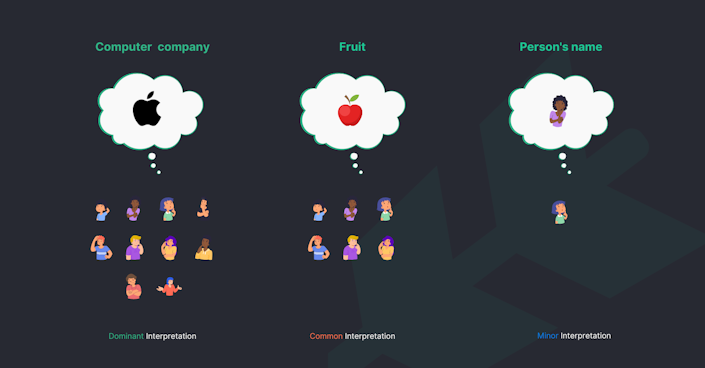
Types of user (search) intent
In Google Search Quality Rating Guidelines, Google mentions the term "user intent" 341 times. Understanding the types of search intent (user intent) helps SEO strategists and digital marketing specialists to develop content strategies optimized for their target audience and the stage of their customer journey.
SEO professionals usually categorize searches into four different types of intent:
Informational
Navigational
Transactional
Commercial
Informational intent
A “know” query is an informational query, where the user wants to learn about a specific topic. Informational queries are closely linked to micro-moments. For instance, you want to check the bus schedule or how many cats Angela has in the famous and loved show - Office. (The correct answer is 17 :))
Often, users who are looking for specific information start their queries with a question. Once they receive their response, searchers leave the SERP. The nature of informational queries is neither commercial nor transactional. Although there might be some product research going on, the user is not yet ready to make a transaction.
You might assume that this kind of website visitor is worthless because they are unlikely to buy a specific product or accomplish another conversion on your website, but they are still worthwhile to target. Answering questions with an informational intent is a terrific approach to increase the relevance of your website and demonstrate to the Google algorithm that your website has E-A-T (Expertise, Authoritativeness, and Trustworthiness), which greatly enhances your rating.
Information intent examples:
How old is Angelina Jolie
How to make a perfect pasta
How to write a blog post
Navigational intent
Navigational queries or “Go” queries are search queries used when a user wants to go to a specific website or location. They might type in “Twitter” or “Netflix” into the search bar since users sometimes find it easier to just search for a company rather than typing in the URL.
Navigational queries are a bit of grey area when it comes to your SEO strategy.
If a user is specifically searching for Nike, serving them Adidas as a result wouldn’t meet their needs.
If someone is searching for one of your competitors, they may not be interested in your company, so including these keywords in your strategy may be a waste of time. Opposite, if users are looking for your company, you want them to find you rather than one of your competitors.
Navigational intent examples:
Google Analytics 4
Facebook
Netflix
Transactional intent
When a user performs a transactional query, they want to conduct a specific action, such as purchasing a specific product or booking a service. Transactional queries are important to e-commerce websites, and product pages, where a user may be looking for a specific brand or item. At this point, the searcher most likely knows what they want, so their search term may include a brand or a specific feature that they seek. Transactional intent searches are extremely valuable for SEO strategy because a click will almost certainly result in a purchase.
Transactional intent examples:
Coupon for Canva
Buy iPhone 13 Pro Max
Buy gym clothes
Commercial intent
Commercial intent searchers are looking for a specific product or service but they're probably still researching different brands or options. Commercial searchers may look for "best running shoes" or "Nike vs. Adidas running shoes." Also, these search phrases could be location-specific. Users might be looking for the top cafes near them or the best resorts in their next vacation destination.
Commercial intent examples:
Review of Samsung smartphones
Top restaurants near me
Best hotels in London
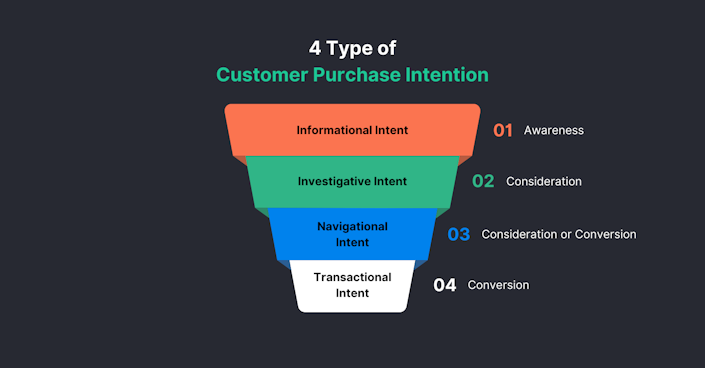
Content optimization with intent
Optimizing your content for search intent will boost your SEO significantly. Not only will your website rank improve, but you will also likely see higher conversion rates, a lower bounce rate, more page views, and a larger audience reach. If you target informational intent, you might even get the coveted Featured Snippet above the first SERP search result. (A Featured Snippet is a SERP feature in which Google highlights specific text within the SERP.) It means Google regards you as an authority on the subject!)
Each page on your website may be intended for different types of users. You'll need to optimize each one to ensure that the content responds to the type of intent that drove the user there.
Here are some of the best ways to optimize your web pages for search intent:
Determine the intent you are targeting
As we learned before in this article there are different types of search intent, (informational, navigational, transactional, and commercial). It is important to understand who is our ideal visitors and what exactly are they looking for. Is it information or a specific product?
Once you understand this, you should double-check the keywords you're targeting to ensure they're relevant to the intent. Do keyword research with SEMrush or Ahrefs and concentrate on longtail keywords that may contain search intent signals.
You may need to do some keyword research to create a list of the best keywords for your website.
Analyze the SERP results
Is there anything that the top few results have in common? Are the web pages organized in any particular way? Is there a specific tone they use? How do they make use of the keyword on their website? Any information you gather will help you with creating your own website.
Next, consider how Google will perceive your website and what types of search intents will bring valuable visitors. This information is critical for developing your website's content strategy. You can determine whether your website content is aligned with the types of search intent you're targeting based on your analysis of other websites.
Start creating your content
The structure and content of your website should respond to the user’s intent. That means you need to use the right keywords and intent-signaling modifiers on your page.
If you’re optimizing your page for transactional intent, you might want to include less text, but with specific product descriptions that emphasize value, as well as clear calls-to-action.
Make sure the entire longtail keywords are in your main headings. Be sure to use the correct headings and HTML elements (<h1> and <h2>), so Google knows which text are headings.
Pro tip: use the longtail keywords in your image all text (this is the alternative text that appears if an image on your website doesn’t load or to help website visitors with accessibility issues understand your page), in your page’s meta tags, and in your blog content.
You want to make sure the keywords are prevalent enough that Google sees your page as an authority on the subject, without overstuffing the keywords on the page.
Conclusion
Meeting User Intent is one of the most critical factors for ranking high in Google Search. User intent is not static, so we must understand and monitor it for the keywords we want to rank for.
To determine User Intent, Google looks at the context (location, device, previous searches) users search in, what results are available, and how close the query is to other known queries. SEOs can look at the top results and SERP Features to learn from Google and identify User Intent. Then, they have to translate that into content and aim to top users’ expectations in the keyword context.
Search intent isn't about short-term hacks or manipulating Google's algorithm to your benefit. Instead, it's about providing value to readers by making their job—searching for the information they need—easier.
